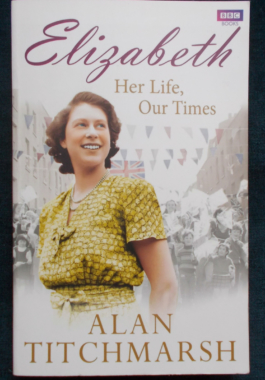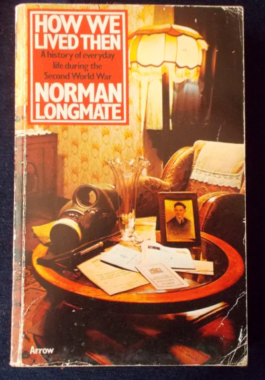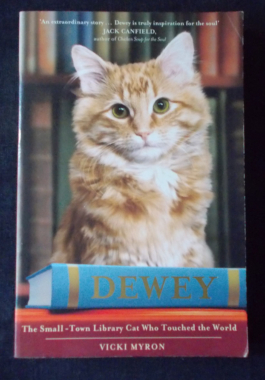In 1931, Charlie Chaplin's film City Lights turned 20-year-old newcomer Virginia Cherril into the most famous girl in the world. She went on to become the adored first wife who broke Cary Grant's heart when she left him; she turned down the very eligible Maharajah of Jaipur to befriend his Indian wife; and in the 1940s she became the Countess of Jersey. All that eluded her was love. And when she found it, she gave up everything she had to marry a handsome, Polish flying ace whose dream it was to become a cowboy. Illustrated with black and white photographs.
-

-
 A profoundly original and thought-provoking book - a critical appraisal of the evolution of science fiction and the part it plays in society today. Intelligent and highly credible, a glimpse of a future in which science fiction has become science fact. An extraordinary blend of memoir, critical analysis of SF, utopian thinking and essays on the nature of dream and the brain, all of which come together brilliantly. Aldiss writes clearly and with conviction and though this book was written in the early 60s, this is taken into account by Aldiss himself.
A profoundly original and thought-provoking book - a critical appraisal of the evolution of science fiction and the part it plays in society today. Intelligent and highly credible, a glimpse of a future in which science fiction has become science fact. An extraordinary blend of memoir, critical analysis of SF, utopian thinking and essays on the nature of dream and the brain, all of which come together brilliantly. Aldiss writes clearly and with conviction and though this book was written in the early 60s, this is taken into account by Aldiss himself. -
 The Two Ronnies went to air on April 1 19721 on the BBC, quickly becoming one of the most successful and long-running comedy shows on British television and the stars - Ronnie Corbett and Ronnie Barker - became national treasures. Ronnie Corbett takes all their fans on a ramble through the corridors of the BBC and the nostalgic world of the legendary duo that brought the world Charley Farley and Peggy Malone, But First, The News and Ronnie In The Chair as well as the serials: The Worm That Turned and The Phantom Raspberry Blower of London Town. This is also a book about the beginning of their careers: when their paths first crossed at the Buckstone Club and how the two came together to star regularly on The Frost Report - and two unique men: one a quiet, private person who found it hard to speak to an audience unless he was in character and the other outgoing and confident with an acute sense of comic timing and ease with the public. If you grew up in the Seventies - you grew up with the two Ronnies, where nothing was sacred yet nothing was tasteless. Illustrated with black and white and colour photographs.
The Two Ronnies went to air on April 1 19721 on the BBC, quickly becoming one of the most successful and long-running comedy shows on British television and the stars - Ronnie Corbett and Ronnie Barker - became national treasures. Ronnie Corbett takes all their fans on a ramble through the corridors of the BBC and the nostalgic world of the legendary duo that brought the world Charley Farley and Peggy Malone, But First, The News and Ronnie In The Chair as well as the serials: The Worm That Turned and The Phantom Raspberry Blower of London Town. This is also a book about the beginning of their careers: when their paths first crossed at the Buckstone Club and how the two came together to star regularly on The Frost Report - and two unique men: one a quiet, private person who found it hard to speak to an audience unless he was in character and the other outgoing and confident with an acute sense of comic timing and ease with the public. If you grew up in the Seventies - you grew up with the two Ronnies, where nothing was sacred yet nothing was tasteless. Illustrated with black and white and colour photographs. -
 Princess Elizabeth of York was crowned Queen on June 2, 1953 and the world watched as she dedicated herself to her country. Drawing on his own experience with the Royal family, together with meticulous research and rare archive material, Titchmarsh tells the story of a young woman thrust into the limelight and how sixty glorious years have revealed her dignity, wisdom and unrivalled devotion to her people. With black and white and colour photographs.
Princess Elizabeth of York was crowned Queen on June 2, 1953 and the world watched as she dedicated herself to her country. Drawing on his own experience with the Royal family, together with meticulous research and rare archive material, Titchmarsh tells the story of a young woman thrust into the limelight and how sixty glorious years have revealed her dignity, wisdom and unrivalled devotion to her people. With black and white and colour photographs. -
 Though she owed everything to her supportive mother Ruthie, Bette Davis remained fascinated all her life with her hard-to-please father, who walked out on his family when she was still a little girl. She could never forget the disappointment in his lack of interest and believed that her resentment toward him was a factor in her four failed marriages. Bette's distinctive voice, remarkable eyes and astonishing range of characterisation all combined to make her one of the finest performers in film history. Drawing on extensive conversations with Bette over the last decade of her life, Chandler brings Bette to life as a dynamic forceful presence - whether as Jezebel the Southern beauty or plain Aunt Charlotte of Now, Voyager. There''s a few myths and legends debunked and some fabulous snippets revealed - such as she did her own make up for Whatever Happened To Baby Jane and literally scared herself. Chandler also spoke with directors, actors, and others who knew and worked with Davis, and includes brief synopses of all of her films. Illustrated with photographs.
Though she owed everything to her supportive mother Ruthie, Bette Davis remained fascinated all her life with her hard-to-please father, who walked out on his family when she was still a little girl. She could never forget the disappointment in his lack of interest and believed that her resentment toward him was a factor in her four failed marriages. Bette's distinctive voice, remarkable eyes and astonishing range of characterisation all combined to make her one of the finest performers in film history. Drawing on extensive conversations with Bette over the last decade of her life, Chandler brings Bette to life as a dynamic forceful presence - whether as Jezebel the Southern beauty or plain Aunt Charlotte of Now, Voyager. There''s a few myths and legends debunked and some fabulous snippets revealed - such as she did her own make up for Whatever Happened To Baby Jane and literally scared herself. Chandler also spoke with directors, actors, and others who knew and worked with Davis, and includes brief synopses of all of her films. Illustrated with photographs. -
 A highly acclaimed chronicle of daily home life during World War II - from stirrup pumps to Spam! This is not only the practicalities of rationing and making do in shortages but an authentic social history covering every aspect of civilian life - including the miseries of dried eggs and the five-inch water level for the bath. Illustrated with black and white photographs.
A highly acclaimed chronicle of daily home life during World War II - from stirrup pumps to Spam! This is not only the practicalities of rationing and making do in shortages but an authentic social history covering every aspect of civilian life - including the miseries of dried eggs and the five-inch water level for the bath. Illustrated with black and white photographs. -
 The cops of Hollywood Station are still overworked, understaffed, bound in red tape and always amazed by what the boulevards can throw at them. Nate Weiss has transferred from the mid-watch to become a Crow - a Community Relations Officer. The Crows deal with domestic disputes, noise complaints, abandoned shopping trolleys and chronic complainers. It's regarded as a sissie beat - and the pay is better. But when Nate and fellow Crow Bix get mixed up with Margot, a seemingly harmless Hollywood hill-bunny in the middle of an ugly divorce, things aren't quite so uncomplicated. The author was an LAPD detective, so this is Ground Zero writing, wherein he knows of what he speaks. There are quirky characters that couldn't be invented - such as the Indian man who thieved a couple of frocks from a posh boutique then popped one on before heading for Paramount Studios...Flotsam and Jetsam, two surf-frenzied detectives...and Sergeant Treakle, non-affectionately known as Chicken-Lips.
The cops of Hollywood Station are still overworked, understaffed, bound in red tape and always amazed by what the boulevards can throw at them. Nate Weiss has transferred from the mid-watch to become a Crow - a Community Relations Officer. The Crows deal with domestic disputes, noise complaints, abandoned shopping trolleys and chronic complainers. It's regarded as a sissie beat - and the pay is better. But when Nate and fellow Crow Bix get mixed up with Margot, a seemingly harmless Hollywood hill-bunny in the middle of an ugly divorce, things aren't quite so uncomplicated. The author was an LAPD detective, so this is Ground Zero writing, wherein he knows of what he speaks. There are quirky characters that couldn't be invented - such as the Indian man who thieved a couple of frocks from a posh boutique then popped one on before heading for Paramount Studios...Flotsam and Jetsam, two surf-frenzied detectives...and Sergeant Treakle, non-affectionately known as Chicken-Lips. -

 In colonial times, Australia was considered the perfect prison - the impenetrable bush and wide oceans were a better barrier than any prison walls. But hundreds of convicts did escape. Most were recaptured; some perished in the bush; others returned half-starved and sometimes half-mad from the wilderness to face further punishment. Some survived by living with the Aborigines or becoming bushrangers. Some made their way to distant ports in the Pacific, Asia and South America. A handful even made it all the way back home. Featured in this collection of true tales: John Graham, who lived with the Aborigines, became an expert tracker and was responsible for the rescue of Eliza Fraser; Mary Bryant, who with her two young children, completed a voyage of almost 5,000 kilometres in an open boat from Sydney to Timor and the terrifying tale of Alexander Pearce, who survived a gruelling walk across Tasmania by eating his companions one-by-one.
In colonial times, Australia was considered the perfect prison - the impenetrable bush and wide oceans were a better barrier than any prison walls. But hundreds of convicts did escape. Most were recaptured; some perished in the bush; others returned half-starved and sometimes half-mad from the wilderness to face further punishment. Some survived by living with the Aborigines or becoming bushrangers. Some made their way to distant ports in the Pacific, Asia and South America. A handful even made it all the way back home. Featured in this collection of true tales: John Graham, who lived with the Aborigines, became an expert tracker and was responsible for the rescue of Eliza Fraser; Mary Bryant, who with her two young children, completed a voyage of almost 5,000 kilometres in an open boat from Sydney to Timor and the terrifying tale of Alexander Pearce, who survived a gruelling walk across Tasmania by eating his companions one-by-one. -
 Dewey's story starts in the worst possible way. Only a few weeks old, on the coldest night of the year, he was stuffed into the returned book slot at the Spencer Public Library. He was found the next working by library director Vicki Myron, a single mother who had survived the loss of her family farm, a breast cancer scare, and an alcoholic husband. Dewey won her heart, and the hearts of the staff, by pulling himself up and hobbling on frostbitten feet to nudge each of them in a gesture of thanks and love. For the next nineteen years, he never stopped charming the people of Spencer with this enthusiasm, warmth, humility (for a cat), and, above all, his sixth sense about who needed him most. As his fame grew and spread from town to town...then state to state... and finally, amazingly, worldwide, Dewey became more than just a friend; he became a source of pride for an extraordinary Heartland farming town pulling its way slowly back from the greatest crisis in its long history. How much of an impact can an animal have? How many lives can one cat touch? How is it possible for an abandoned kitten to transform a small library, save a classic American town, and eventually become famous around the world? For Dewey Readmore Books, it was easy.
Dewey's story starts in the worst possible way. Only a few weeks old, on the coldest night of the year, he was stuffed into the returned book slot at the Spencer Public Library. He was found the next working by library director Vicki Myron, a single mother who had survived the loss of her family farm, a breast cancer scare, and an alcoholic husband. Dewey won her heart, and the hearts of the staff, by pulling himself up and hobbling on frostbitten feet to nudge each of them in a gesture of thanks and love. For the next nineteen years, he never stopped charming the people of Spencer with this enthusiasm, warmth, humility (for a cat), and, above all, his sixth sense about who needed him most. As his fame grew and spread from town to town...then state to state... and finally, amazingly, worldwide, Dewey became more than just a friend; he became a source of pride for an extraordinary Heartland farming town pulling its way slowly back from the greatest crisis in its long history. How much of an impact can an animal have? How many lives can one cat touch? How is it possible for an abandoned kitten to transform a small library, save a classic American town, and eventually become famous around the world? For Dewey Readmore Books, it was easy.


